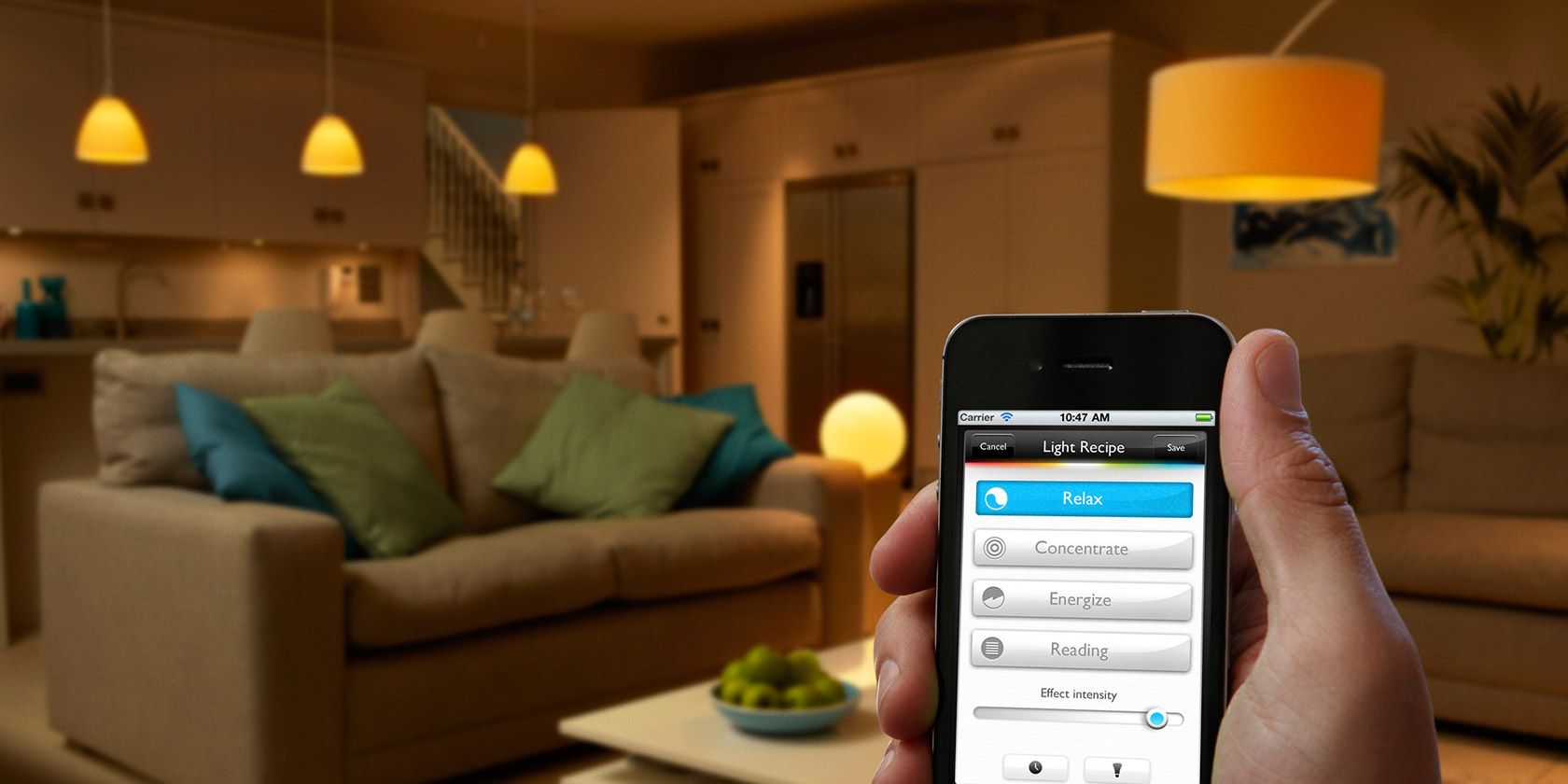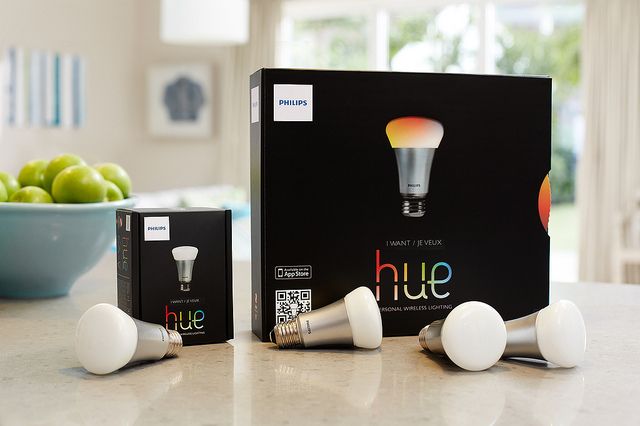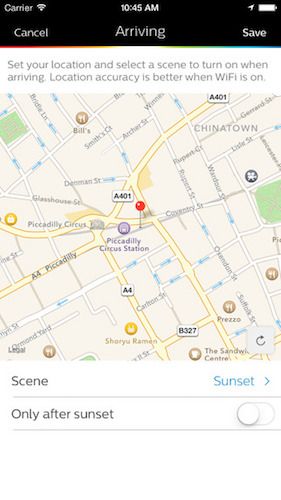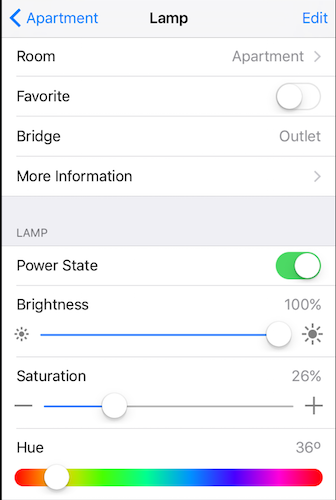Apple's HomeKit is some really exciting technology. First introduced with iOS8, it allows you to control compatible Smart Home devices from your iPhone, iPad, and Apple Watch.
But the amount of HomeKit compatible gear has always been somewhat disappointing. A year or so later, only a handful of devices have been released, and manufacturer interest seems to be waning.
Or, perhaps not. Philips has finally joined the fray. The Dutch electronics giant has finally gotten round to integrating HomeKit into their Hue lighting platform, and it's amazing. Here's what you need to know.
Getting Started With Hue and HomeKit
The Philips Hue lighting system is no ordinary lighting system. It's centered around a range of powerful, energy efficient LED lightbulbs. Not only do these sip significantly less energy than traditional halogen lightbulbs, but they can even change shade, temperature, and color on demand.
These are connected to a "bridge". This is essentially a hockey-puck shaped box, which connects to your network over Ethernet, and allows you to remotely control as many as 50 bulbs via a mobile application, available for iOS and Android.
The Philips Hue family has been on the market since 2012. If you bought a starter kit between then and now, I've got some bad news for you. It's almost certainly not compatible with Apple HomeKit. For that, you're going to need to buy a new bridge. Here, you've got two options.
You can either buy a brand-new Philips Hue starter kit, which includes a HomeKit-compatible bridge, as well as three additional lightbulbs. That'll set you back around $200, which is a lot considering that there are significantly cheaper alternatives to Hue.
Alternatively, if you're happy to wait until November 1st 2015, you can purchase one directly from Philips for $40. This is a third-off from the ordinary price of $60, although don't expect this offer to last. The price shoots back up at the end of the year.
If you can't be bothered buying a new bridge, you can always configure Hue to work with Arduino.
Once you're all set up, you're ready to control your lighting from Siri. As you've probably imagined, there are a few ways to control Hue from your iPhone.
Hue In Your iWorld
First, there's the HomeKit way. This lets you control Hue, simply by speaking into Siri. This works much as you'd expect. Turning off the lights is as simple as saying "Siri, turn off the lights".
HomeKit also lets you control the individual attributes of each bulb, and allows you to define the brightness levels and color temperatures. You can even create pre-defined settings, which can be activated through Siri. For example, you could say "Siri, reading mode" (or, as in their commercial, "play time"), at which point, the lights would dim accordingly.
HomeKit also lets you combine Philips Hue with other compatible devices. For example, you could say "Siri, I'm going to bed". At which point, HomeKit would turn off your lights, and use your Nest thermostat to turn up the heat. Cool, right?
There are also a number of applications that let you control Philips Hue, both third-party and official.
If you want to set up Hue with Siri, you'll need to download the official Philips Hue App (free) [No Longer Available], available for iPhone and iPad. But beyond HomeKit, it has some incredible features that are worth a look.
Not only does it allow you to set up an alarm, which'll wake you up by gradually increasing your room's illumination, it also allows you to control your lighting based on your location. So, if you're nearby your house, it'll know to turn the lights on. Likewise, if you're walking away from your home, you can configure it to turn the lights off, in order to save energy.
It's worth pointing out that there's a Philips Hue app for Android [No Longer Available], although this obviously doesn't support HomeKit.
In addition, there are a number of excellent, yet unofficial third-party applications which take advantage of HomeKit to control Philips Hue. One of the most interesting is Home ($14.99), by Matthias Hochgatter.
Available for iPhone, iPad and Apple Watch, this app is seriously powerful, and allows you to control each connected HomeKit device (including Philips Hue) with an obsessive amount of detail.
Each bulb can be configured with startling precision, in order to have the right brightness, saturation, and hue levels. It also allows you to create "rooms", which group HomeKit devices based upon placement, as well as scenes and triggers.
And because it's built around HomeKit, you can use it with Siri. In this video, iMore's managing editor Serenity Caldwell shows you how it's done (skip to 1:40):
Straight Outta Star Trek
To understand why this is so exciting, you just have to imagine what it'd be like to walk into your home and say:
"Siri, turn the lights on"
It's enough to convince you that you're on the Starship Enterprise. But you're not. You're just using some off-the-shelf technology, paired with Apple's HomeKit. What a time to be alive.
But will this be enough to convince you to get a Philips Hue system? I want to hear about it. Leave me a comment below, and we'll chat.
Image Credit: RELAX-APP-SCREEN by Philips Communications via Flickr




